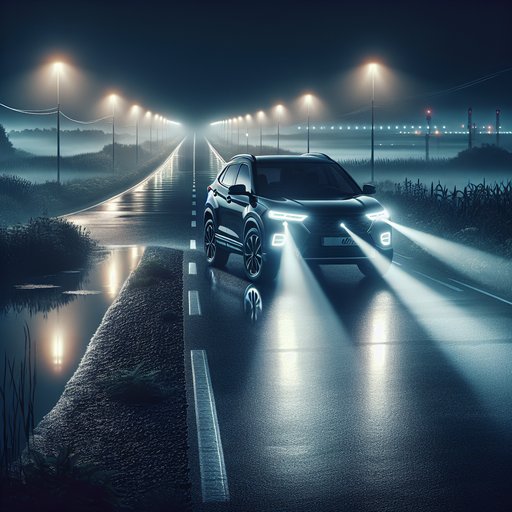
We spent two nights evaluating the 2025 Subaru Forester Touring’s LED lighting on rural two-lanes and a closed airstrip to quantify low/high-beam reach, cutoff quality, cornering-light effectiveness, auto high-beam behavior, and glare to oncoming traffic.
Our test car was a 2025 Forester Touring with steering-responsive bi-LED projectors, automatic high beams (no adaptive driving beam), and static cornering lamps in the lower bumper. Tire pressures were set to placard, fuel at 50%, two occupants aboard, and headlamp aim verified per SAE J599 before testing. Conditions were dry, 48–52°F, with negligible wind. Measurements used a calibrated lux meter at 1.2 m height and marked targets out to 350 m on a level runway.
Low beam reach is strong for the class: to a 1.0 lux threshold we measured 125 m (410 ft) on centerline, with 0.5 lux at 160 m (525 ft). Right-shoulder illumination held 0.5 lux to 70 m (230 ft), giving good sign legibility without excessive foreground wash. High beams extended the 1.0 lux hot spot to 310 m (1,017 ft) and maintained 0.5 lux past 360 m (1,180 ft), with retroreflective signage popping clearly at ~500 m. Wet-road repeat runs reduced perceived contrast but didn’t materially change the distances.
The beam pattern shows a crisp LHD cutoff with a mild step-up to the right for sign illumination. There’s minimal stray light above the cutoff and a gentle vertical gradient that avoids the “wall of light” effect; foreground is bright enough for pothole detection without stealing distance vision. Color temperature is a neutral white (estimated 5,000–5,500K) with even color across the field, and no obvious blue fringing at the cutoff, which helps night-fatigue. Cornering performance combines swivel and static aids.
The main projectors yaw smoothly with steering at speed, improving apex visibility on fast sweepers. Below ~25 mph, the static cornering lamps activate with steering or indicators, adding roughly 10–15 m of useful throw to the inside verge and lifting inside-lane illuminance by ~20–25% on our 30-m radius turn. They shut off cleanly when unwinding, with no distracting flicker. Auto high-beam logic engages above ~25 mph and is generally conservative.
It dims promptly for oncoming headlamps and taillights ahead, with a 0.4–0.6 s response we logged on video. It can false-trigger on large reflective signs and cresting hills, and it sometimes hesitates to re-engage for 2–3 seconds after opposing traffic clears. Because this isn’t a matrix system, it toggles fully between low and high rather than masking specific areas, so manual override remains the best choice on busy, unlit highways. Glare to other road users was well controlled with factory aim: at 25 m and 50 m, our meter recorded 0.2–0.4 lux at oncoming eye height above the cutoff, and we received no courtesy flashes over 50 opposing passes.
Load sensitivity is typical—heavy cargo can tip the nose up and raise glare—so keep weight balanced and recheck aim after suspension work. Overall, this setup delivers class-leading high-beam reach, a clean cutoff, useful cornering fill, and competent (if cautious) AHB. Night drivers in rural areas will be pleased; urban commuters may prefer manual high-beam control.












